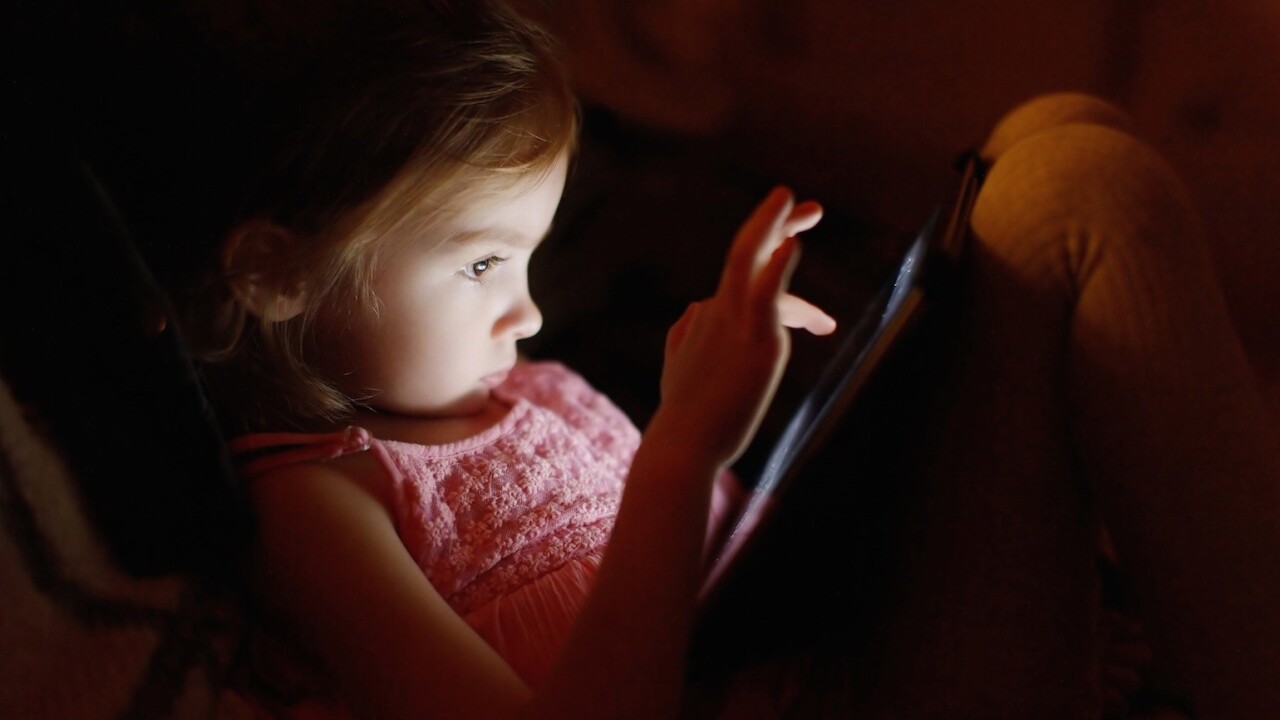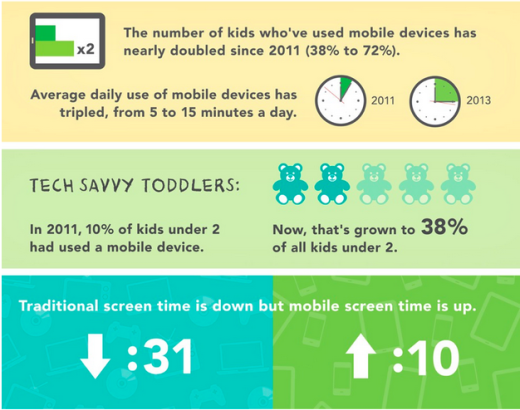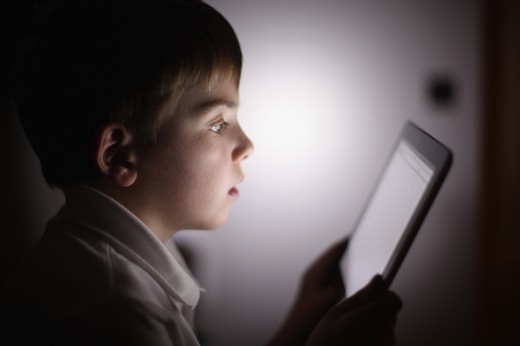
Certainly, one of the most pressing questions for today’s parents and their children has to be how much “screen time” to allow. The growth of mobile devices and kid-focused apps have significantly increased the number of hours that kids spend in front of screens, and untold amounts of parental worry have been dedicated to what constitutes the “right” amount. Even apps that are labeled as distinctly for kids, like YouTube Kids, have.
This is the wrong question. There is no “right” amount of screen time, nor is the answer the same for every family.
This discussion actually reminds me of those that surround childhood obesity. We now know that quality of calories is just as, if not more important, for health than the quantity of calories, within reason. Consuming 420 calories from a Happy Meal is not the same as 420 calories from a homemade vegetable and chicken stir fry. Similarly, conversations about screen time are best spent focusing on how to yield the greatest value or “nutritional” benefit from the amount put in.
The Murky Parameters
The American Academy of Pediatrics (AAP) recommends that screen time be limited to less than one or two hours per day, and for children under two, to “discourage screen media exposure.” However, a recent study from Zero To Three found that 38 percent of all children less than two years old have used a mobile device for a media activity, compared to 10 percent two years ago. Among two-to four-year olds, the rate has risen from 39 percent to 80 percent, and among five- to eight-year-olds, mobile media usage has risen from 52 percent to 83 percent.
The reality is that mobile devices are everywhere. According to a Common Sense Media study of children’s media usage in America, over 75 percent of children have access to a “smart” mobile device at home. Between 2011 and 2013, time spent consuming media on smartphones and iPads increased by 10 minutes a day. Since then, these numbers have only gone up.

Common Sense Media 2013
Too much screen time, even educational screen time, does have negative effects. Research has found that it can lead to childhood obesity, irregular sleep patterns, and to social/ behavioral issues. However, it can also have positive effects, which has actually led the AAP to debate the validity of their recommendation.
Ultimately, the best way forward is to avoid proscriptions. Parents should figure out what represents a reasonable amount of screen time for their child and household, and then explore how to make those hours as constructive as possible.
Digital Babysitters
Screen time is the most educational when parents and kids are engaging with the device together. According to the Zero To Three report mentioned above, “A growing body of research shows that learning from TV and touchscreens can be enhanced when parents participate with their children to create a social, interactive experience.”
A surprising data point we’ve come across through PlayKids is that kids actually spend more time reading e-books and playing games than watching shows. Normally you’d think kids would just want to watch their favorite shows over and over. And while this is definitely there, kids also want to read, play and be engaged in other ways, naturally. This is even more true if parents take a hands-on role and interact with their kids and the app and read them eBooks or help them play games.

Parents can participate by talking about what they are seeing and doing. This supports language acquisition, enhances a child’s understanding of what they learn, and helps them connect what they see on screen to the real world. And, of course, parents also may spend time playing with their kids in real life, far from the digital world.
Avoiding Passive Consumption
Three hours of watching YouTube Kids or Netflix Kids videos and three hours spent in an interactive educational app that promotes critical thinking are not the same, the former being the screen time equivalent of a Happy Meal. My basic rule of thumb is, “does this turn my kid into a zombie?” Generally speaking, you want to avoid passive consumption. Watching noninteractive videos about science is only marginally better than watching noninteractive videos about silly cats.
So how do you know which apps are the “good” or “educational” ones? In the Psychological Science and the Public Interest Journal, a team of researchers published a review of over 200 articles and studies about how to separate the educational from the entertaining. They boiled down their findings to four core pillars.
First, “humans learn best when they are actively involved with the material.” This does not mean tapping or swiping, but rather “minds-on” activities that require intellectual thinking and the manipulation of information. While technically “interactive,” an arcade style shooter game does not qualify as “minds-on”. That’s why we consider extremely important the dialog between parents and kids about their experience with content, exploring important concepts, exchanging ideas, interacting about life.

Secondly, children need to engage with the material, which means they also need to be free from distractions. Apps that are filled with distractions like sounds or buttons or side games, or worse, ads, do not encourage learning, even if their theme is academic.
Third, the researchers found that “information is processed at a deeper level when it meaningfully relates to past knowledge or when it is personally relevant.” This means that you want to look for apps that prompt kids to connect new information with knowledge from their daily lives. For example, by learning about triangles by taking pictures of triangles they see in their home.
Last but not least, apps are more constructive when they allow children to socially interact with others, and thus hone their social skills, as well as acquire new information. This would be much better if the social interaction happened in real life, not only digitally.
With YouTube Kids coming under fire recently for insufficient educational content and programs that read more as ads than entertainment, an app or video that advocates these types of learning are what parents are looking for and for what kids deserve.
And furthermore technologically speaking, we are leaving so much innovation on the table when we offer kids a passive experience. Literally built into mobile devices there are many interactive features and inputs that could power a dynamic experience. From cameras and accelerometers to GPS and touch screens, these sensors open a wide range of opportunities to build extraordinary innovation just for kids.
Offscreen
Limiting screen time should be less about fears that it will rot your child’s brain, and more because it will free up time for your kid to spend in the “real world,” where there are 3-D things for them to experience, and other kids to play with.

Screens should never become a replacer (or displacer) of those priceless moments spent climbing trees, throwing a ball, finger painting, or setting up a lemonade stand. However, by making sure that the digital content your child consumes awakens, rather than deadens, their mind, screens can become a powerful tool for good.
What is your philosophy around screen time? Any tips or tricks on how you keep your kids balanced in terms of appropriate screen time?
I would love hear your thoughts in the comment section below.
Read Next: 15 productivity tips for a startup parent
Image credit: Shutterstock
Get the TNW newsletter
Get the most important tech news in your inbox each week.




